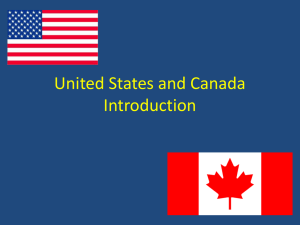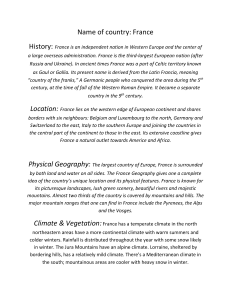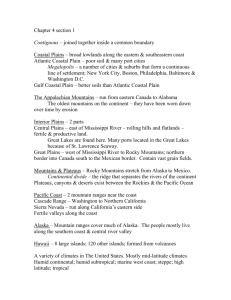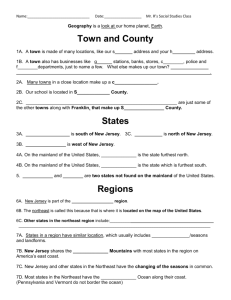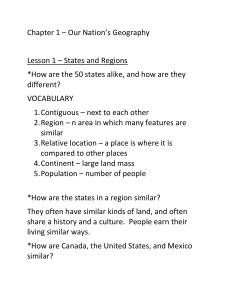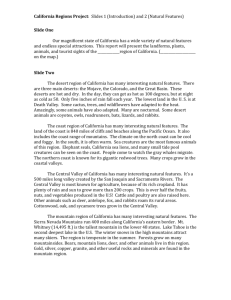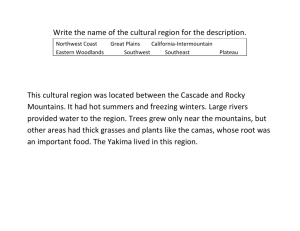The Northwest Coast culture area encompasses
advertisement
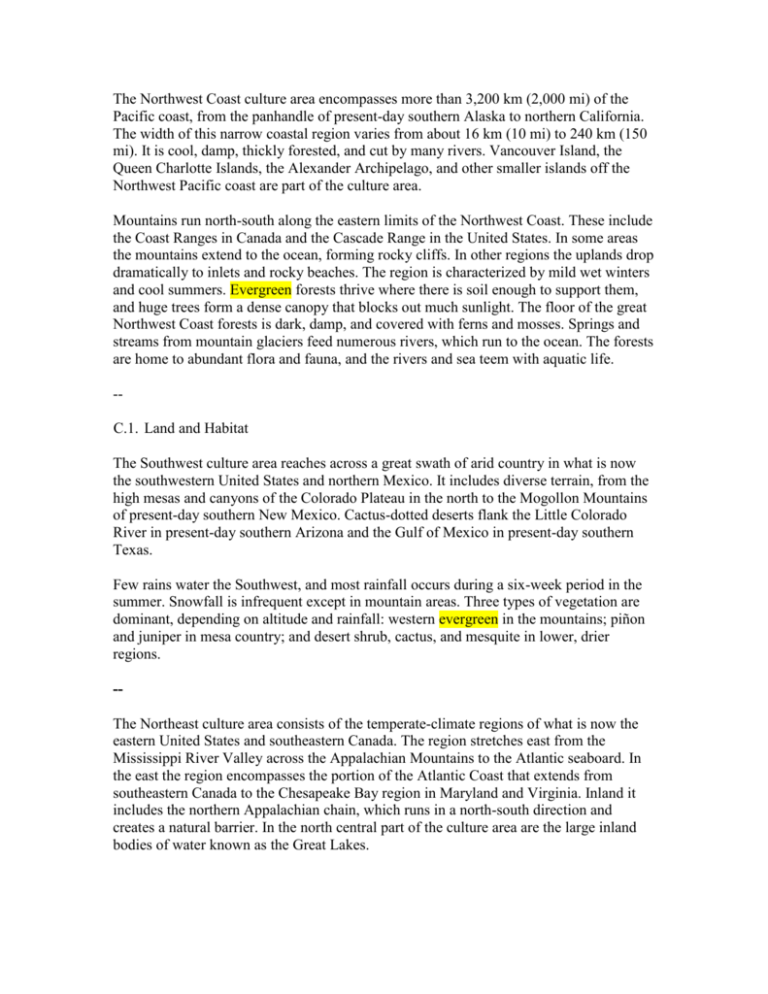
The Northwest Coast culture area encompasses more than 3,200 km (2,000 mi) of the Pacific coast, from the panhandle of present-day southern Alaska to northern California. The width of this narrow coastal region varies from about 16 km (10 mi) to 240 km (150 mi). It is cool, damp, thickly forested, and cut by many rivers. Vancouver Island, the Queen Charlotte Islands, the Alexander Archipelago, and other smaller islands off the Northwest Pacific coast are part of the culture area. Mountains run north-south along the eastern limits of the Northwest Coast. These include the Coast Ranges in Canada and the Cascade Range in the United States. In some areas the mountains extend to the ocean, forming rocky cliffs. In other regions the uplands drop dramatically to inlets and rocky beaches. The region is characterized by mild wet winters and cool summers. Evergreen forests thrive where there is soil enough to support them, and huge trees form a dense canopy that blocks out much sunlight. The floor of the great Northwest Coast forests is dark, damp, and covered with ferns and mosses. Springs and streams from mountain glaciers feed numerous rivers, which run to the ocean. The forests are home to abundant flora and fauna, and the rivers and sea teem with aquatic life. -C.1. Land and Habitat The Southwest culture area reaches across a great swath of arid country in what is now the southwestern United States and northern Mexico. It includes diverse terrain, from the high mesas and canyons of the Colorado Plateau in the north to the Mogollon Mountains of present-day southern New Mexico. Cactus-dotted deserts flank the Little Colorado River in present-day southern Arizona and the Gulf of Mexico in present-day southern Texas. Few rains water the Southwest, and most rainfall occurs during a six-week period in the summer. Snowfall is infrequent except in mountain areas. Three types of vegetation are dominant, depending on altitude and rainfall: western evergreen in the mountains; piñon and juniper in mesa country; and desert shrub, cactus, and mesquite in lower, drier regions. -The Northeast culture area consists of the temperate-climate regions of what is now the eastern United States and southeastern Canada. The region stretches east from the Mississippi River Valley across the Appalachian Mountains to the Atlantic seaboard. In the east the region encompasses the portion of the Atlantic Coast that extends from southeastern Canada to the Chesapeake Bay region in Maryland and Virginia. Inland it includes the northern Appalachian chain, which runs in a north-south direction and creates a natural barrier. In the north central part of the culture area are the large inland bodies of water known as the Great Lakes. Hundreds of rivers flow throughout the Northeast, and much of the soil, especially in the valleys, is suitable for agriculture. Although generally humid, the climate is varied, like the terrain, with the lengths of the four seasons determined by latitude and altitude. The Northeast culture area is sometimes referred to as Northeast Woodlands because of the widespread forests, including broadleaf hardwoods and coniferous evergreens. Sometimes the area is grouped with the Southeast culture area and referred to as the Eastern Woodlands. -B. Paleo-Indians The early colonizers of the Americas, known as Paleo-Indians, faced the challenge of adapting to vast new lands with a great diversity of local environments. These lands were themselves undergoing dramatic changes as the great ice sheets melted off and global climates rapidly warmed. Living in small bands of perhaps 25 to 75 people, Paleo-Indians had to learn how to survive in the new lands and to maintain contacts with distant kin. For this reason, they were highly nomadic, moving regularly and camping in easily transported animal-skin tents or other lightweight shelters. Equipped with an assortment of tools made from stone, bone, and wood, they hunted a variety of animals, from small prey such as turtles and birds, to large game, including deer and the occasional mammoth. They probably also relied on wild plant foods as well, although evidence of this is rarely preserved. By about 10,000 years ago the descendants of the first Americans had left traces of their presence in virtually every corner of the Americas, from high in the Rocky Mountains down to lush tropical lowlands near the equator. After that time, regionally distinctive ways of life began to appear throughout the Americas as Paleo-Indian groups adapted to local environments. In North America these environments included deciduous woodlands and evergreen forests, vast deserts, grassy prairies, fertile river drainages, and coastal lowlands. Paleo-Indians living in desert country became adept at collecting wild plant foods because game animals were scarce. Buffalo- (or bison-) hunting cultures appeared on the Great Plains, where large herds of the animals lived. People living in forests hunted woodland game animals, while those near rivers and lakes fished and hunted waterfowl. Along the coasts, Paleo-Indians fished and gathered shellfish. In time, agriculture spread to North America from Mesoamerica, where cultivation of food crops began as early as 7,000 years ago, and sophisticated farming cultures appeared in the southwestern and eastern regions of what is now the United States.
